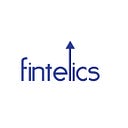Basic Understanding of Hyperledger Fabric and it’s Benefits from a business perspective
What is Hyperledger Fabric?
Hyperledger fabric is a supporting structure (framework) to a blockchain intended as a starting point (Foundation) for creating (developing) applications or solutions with a set of things working together in many different parts (modular architecture) so that you can remove, make changes to or add to any one of those parts without affecting the rest of the system
Hyperledger Fabric allows parts or elements (components) such as; agreement protocol (consensus) and membership services to work perfectly when first used without any adjustment by the user (be plug and play).
Hyperledger fabric uses container technology to package smart contracts called chaincode so they can run with the parts they are dependent on while isolated from other processes. These chaincode make up the technical specifications (application logic) of the system
What are the benefits of using Hyperledger fabric?
Private transactions and contracts can be made — Unlike common blockchains, hyperledger fabric allows private transactions and confidential contracts to be made which are needed for practical business applications of the blockchain.
Scalable and secure for practical use — The foundation of hyperledger fabric makes it scalable and secure for practical industry based blockchain applications
All participants are permissioned and verifiable — All members have to have permissioned and known verifiable identities
Transactions are separated into 3 simple parts to allow the system to run smoother — The Transaction processing workflow is separated into 3 parts by the modular architecture. These are the chaincode (made up of the system supplementing the main computer by doing some of the computing or decision making), transaction ordering, and transaction validation and commitment. Doing this allows for things to run smoother due to less effort on the network.
Plug and Play for easy integration and reuse of features — Various elements work perfectly once connected so that the users do not need to make any adjustments which means features can be easily integrated and reused. If a feature already exists you don’t need to recreate it, you can reuse the existing template.
Transactions are accepted only when verified participants endorse and validate it — There are 3 roles participants on the network have; Endorser, committer and consenter.
The proposal for the transaction is sent to the endorser(s) once it has been endorsed a block of transactions is sent to the committer(s) who then validate it to make sure that there are no incompatible or contradictory transactions. After passing these stages the transaction is made and is a part of the blockchain.
Improved Performance and Scalability due to only sending simple instructions — The performance and scalability of the network is improved due to only sending simple instructions across the network like Input/Output. The endorsers and the committers are the only ones that have access to the transaction and fewer number of participants means better security.
Private data such as prices stays private — A common blockchain will reveal a private price to all parties involved in the movement of a product whereas Hyperledger fabric keeps a private price private and only known to those that need to know
